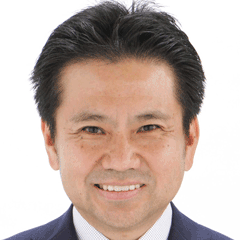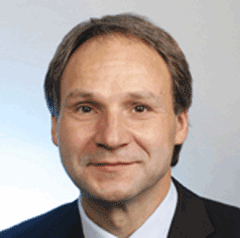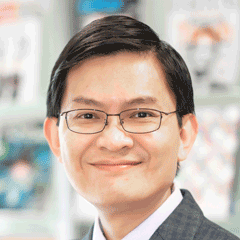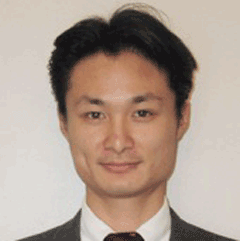Committee
Workshop Organizers
Co-chairs

Prof. Takaya Yamazato (S’91–M’93) is a professor at the Institute of Liberal Arts and Sciences, Nagoya University, Japan. He received a Ph.D. from the Department of Electrical Engineering, Keio University, Yokohama, Japan, in 1993. From 1993 to 1998, he was an Assistant Professor at the Department of Information Electronics, Nagoya University, Japan. From 1997 to 1998, he was a visiting researcher at the Research Group for RF Communications, University of Kaiserslautern, German. In 1998, he gave a half-day tutorial entitled “Introduction to CDMA ALOHA” at Globecom held in Sydney, Australia. Since then, he has been serving as a TPC member of Globecom and ICC. In 2006, he received the IEEE Communication Society’s Best Tutorial Paper Award. He served as the co-chair of the Wireless Communication Symposia of ICC 2009 and was the co-chair of Selected Areas in Communication Symposia of ICC 2011. From 2008 to 2010, he served as the chair of the Satellite and Space Communication Technical Committee. In 2011, he gave a half-day tutorial entitled “Visible Light Communication” at ICC 2011 held in Kyoto, Japan.

Dr. Volker Jungnickel (M'99) received doctoral and habilitation degrees in Physics and Communications Engineering from Humboldt University and Technical University in Berlin in 1995 and 2015, respectively. He joined Fraunhofer HHI in 1997 working on optical wireless communication, multiple antenna techniques in mobile networks and new fixed acess network infrastructures. Besides, he serves as Privatdozent at Technical University in Berlin with lectures and supervises Masters and Ph.D. thesis. Volker serves as Chair of IEEE P802.15.13 task group on Multi-Gbit/s Optical Wireless Communications and as Technical Editor for the IEEE P802.11bb task group on Light Communications.

Prof. Chi-Wai Chow received the B.Eng. (First-Class Hons) and Ph.D. degrees both from the Department of Electronic Engineering, the Chinese University of Hong Kong (CUHK) in 2001 and 2004 respectively. After graduation, he was appointed as a Postdoctoral Fellow at the CUHK, working on hybrid integration of photonic components and silicon waveguides. Between 2005-2007, he was a Postdoctoral Research Scientist, working mainly on two European Union Projects PIEMAN (Photonic Integrated Extended Metro and Access Network) and TRIUMPH (Transparent Ring Interconnection Using Multi-Wavelength Photonic switches) in the Tyndall National Institute and Department of Physics, University College Cork (UCC) in Ireland. In August 2007, he joined the Department of Photonics, National Chiao Tung University (NCTU) in Taiwan. He is a Professor in this department. His research interests are visible light communication, optical wireless communication, radio-over-fiber, passive optical network, silicon photonics.

Prof. Koji Kamakura (S'99–M'02) received the B.E., M.E., and Ph.D. degrees in electrical engineering from Keio University, Yokohama, Japan, in 1997, 1999, and 2002, respectively. He is a Professor at Department of Computer Science, Chiba Institute of Technology, Chiba, Japan. From 2002 to 2006, he was an Assistant Professor at the Department of Electronics and Mechanical Engineering, Chiba University, Chiba, Japan. From 2006 to 2015, he was an Associate Professor with the Department of Computer Science, Chiba Institute of Technology, Chiba, Japan. He was a Visiting Professor at Heudiasyc, Université de Technologie de Compiègne, France, from April 2013 to March 2014. He was a Visiting Scientist at the School of Information Technology and Engineering, University of Ottawa, Ottawa, ON, Canada, in 2002 and 2003. From 2000 to 2002, he was a Special Researcher of Fellowships of the Japan Society for the Promotion for Science, for Japanese Junior Scientists. His research interests include optical communication theory and system analysis. He is a Member of the IEICE. He received the 14th Telecom System Technology Award for Students from the Telecommunications Advancement Foundation in 1999 and the Ericsson Young Scientist Award in 2002.
List of Committee Members
- Luis Nero Alves, University of Aveiro, Portugal
- Shlomi Arnon, Ben-Gurion University of the Negev, Israel
- Bastien Béchadergue, OLEDCOMM, France
- Chedlia BEN NAILA, Nagoya University, JAPAN
- Tarik Borogovac, Boston University, USA
- Maite Brandt-Pearce, Univ. of Virginia, USA
- Dominic O’Brien, Oxford University, UK
- Xiong Deng, Technical University of Eindhoven, Netherlands
- Hany Elgala, University at Albany, USA
- Fary Ghassemlooy, Northumbia University, UK
- Roger Green, University of Warwick, UK
- Harald Haas, University of Edinburgh, UK
- Shinichiro Haruyama, Keio University, Japan
- Tiffany Jing Li, Lehigh University, USA
- Jean-Paul Linnartz, Signify, Netherlands
- Mohammad-Ali Khalighi, Aix Marseille University, France
- Thomas Kamalakis, Harokopio University of Athens, Greece
- Mohsen Kavehrad, Pennsylvania State University, USA
- Valencia Joyner Koomson, Tufts University, USA
- Erich Leitgeb, Graz University of Technology, Austria
- Xin Lin, Nakagawa Laboratories Inc, Japan
- Thomas Little, Boston University, USA
- Francisco Lopez-Hernandez, Universidad Politecnica de Madrid, Spain
- Stefan Mangold, Lovefield Wireless GmbH, Switzerland
- Rafael Pérez Jiménez, Universidad de Las Palmas de Gran Canaria, Spain
- Maximilian Riegel, Nokia Bell Labs, Germany
- Brian Sadler, Army Research Laboratory, USA
- Murat Uysal, Ozyegin University, Turkey
- Mike Wolf, Ilmenau Technical University, Germany
- Xiping Wu, Oxford University, UK
- Zhengyuan Xu, Tsinghua University, China
- Lutz Lampe, University of British Columbia, Canada
- Shintaro Arai, Okayama University of Science, Japan
- Wataru Chujo, Meijo University, Japan
- Hiromasa Habuchi, Ibaraki University, Japan
- Tomohiko Yendo, Nagaoka University of Technology, Japan
- Anatolij Zubow, Technical University Berlin, Germany
- Stanislav Zvanovec, Prague Technical University, Czech Republic
- Yusuke Kozawa, Ibaraki Univerisity, Japan
- Masayuki Kinoshita, Chiba Institute of Technology, Japan